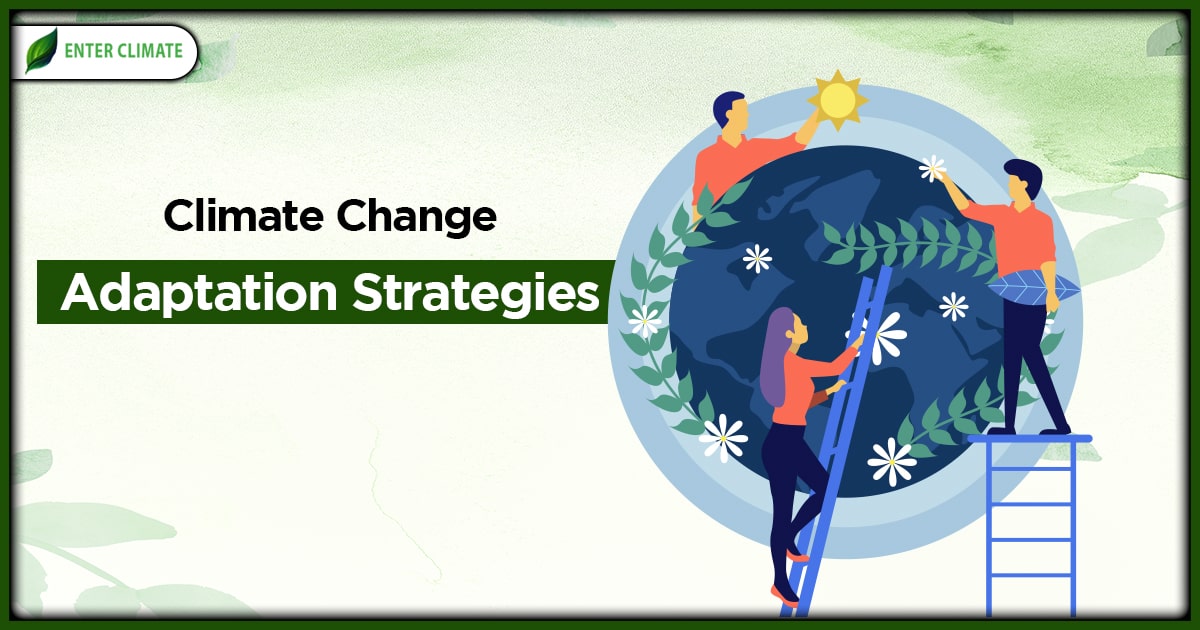Report on the Impact of Funding Reductions on Domestic Violence Services and Sustainable Development Goals
Executive Summary
Domestic violence support organizations across the United States are facing a severe funding crisis, leading to significant reductions in essential services. This situation directly threatens progress toward several key United Nations Sustainable Development Goals (SDGs), including SDG 5 (Gender Equality), SDG 3 (Good Health and Well-being), SDG 11 (Sustainable Cities and Communities), and SDG 16 (Peace, Justice and Strong Institutions). The crisis is driven by the depletion of primary federal funding sources, such as the Crime Victims Fund (VOCA), and proposed budgetary cuts, forcing organizations to curtail operations at a time of increasing demand. This report outlines the causes of the funding shortfall, its direct consequences on services that support the SDGs, and the systemic challenges that jeopardize the safety and well-being of survivors.
The Funding Crisis: A Threat to Strong Institutions (SDG 16)
The operational capacity of domestic violence organizations is being undermined by an unstable and diminishing funding landscape, weakening the institutional frameworks designed to protect vulnerable populations and provide access to justice, a core tenet of SDG 16. Key factors contributing to this crisis include:
- Depletion of the Crime Victims Fund (VOCA): Established in 1984, the VOCA fund has been a primary source of support. However, its reserves are dwindling due to a decrease in deposits from federal criminal cases. VOCA funding reportedly fell by 40% in 2024.
- Proposed Federal Budget Cuts: The President’s 2026 budget proposes a $200 million reduction in grants from the Office of Violence Against Women, further destabilizing the sector.
- Reductions in Prevention Programs: Layoffs at the Centers for Disease Control and Prevention (CDC) have impacted the National Center for Injury Prevention and Control. Furthermore, a proposal seeks to combine funding for the Domestic Violence Prevention Enhancement and Leadership Through Alliances (DELTA) and Rape Prevention and Education (RPE) programs and reduce their combined annual budget from over $69 million to just $38 million.
This confluence of funding reductions creates what Stephanie Love-Patterson, CEO of the National Network to End Domestic Violence, describes as a “perfect storm,” severely compromising the ability of these institutions to function effectively.
Consequences for Gender Equality, Health, and Community Safety (SDGs 3, 5, 10, 11)
The reduction in funding has led to a tangible decline in services, directly impeding progress on multiple SDGs aimed at ensuring health, equality, and safety. The operational impacts are severe and widespread:
- Erosion of Gender Equality Protections (SDG 5): The core mission to eliminate all forms of violence against women (Target 5.2) is at risk. Organizations are forced to turn away survivors, leaving them in dangerous situations and reversing progress on gender equality.
- Compromised Health and Well-being (SDG 3): The SANE (Sexual Assault Nurse Examiner) program in Birmingham, Alabama, which provides critical medical forensic exams, has faced funding cuts of over 22%. Reduced hotline hours and the closure of support groups negatively impact the mental and physical health of survivors.
- Reduced Access to Safe Housing (SDG 11): The closure of shelters, as reported in Wisconsin, denies victims access to safe and affordable housing (Target 11.1), a critical step in escaping violence.
- Increased Inequality and Poverty (SDG 1 & 10): The inability to provide financial assistance traps survivors in cycles of violence and economic instability, exacerbating poverty (SDG 1) and inequality (SDG 10).
Case studies illustrate the scale of the problem. The North Carolina Coalition Against Domestic Violence experienced a 60% funding decrease between 2018 and 2024 while serving 75% more victims. In Wisconsin, VOCA funding plummeted from $44 million in 2019 to $13 million in 2024, forcing one partner organization to close its shelter and another to cut nine staff members.
Systemic Challenges and the Impact on Decent Work (SDG 8)
The funding crisis highlights deeper systemic issues and has a significant impact on the workforce dedicated to supporting survivors, running counter to the principles of SDG 8 (Decent Work and Economic Growth).
- Workforce Burnout and Attrition: Staff in the domestic violence sector face emotionally demanding work. Funding cuts lead to layoffs, increased workloads for remaining staff, and low pay, resulting in high burnout and difficulty recruiting trained professionals. This undermines the goal of decent work for all (Target 8.8).
- Lack of Federal Coordination: Layoffs at the CDC have eliminated federal oversight for some prevention programs, weakening the national infrastructure for coordinating domestic violence prevention.
- Rising Demand Amid Economic Strain: Organizations report that demand for services often increases during periods of economic downturn, yet the funding is disappearing when it is needed most.
Conclusion and Recommendations for Sustainable Funding
The current funding model for domestic violence services is unsustainable and actively hinders the nation’s ability to meet its commitments under the Sustainable Development Goals. The lack of stable funding creates a life-or-death situation for survivors of domestic violence. To rebuild the institutional capacity necessary to achieve SDG 5 and SDG 16, a new approach is required. Advocates support legislative solutions like the Crime Victims Fund Stabilization Act, which would redirect funds to stabilize VOCA. However, a long-term, reliable federal funding strategy is imperative to ensure that the organizations providing these critical, life-saving services can operate effectively and help build the peaceful, just, and inclusive society envisioned by the SDGs.
Analysis of Sustainable Development Goals in the Article
1. Which SDGs are addressed or connected to the issues highlighted in the article?
-
SDG 5: Gender Equality
The article’s central theme is the reduction of services for victims of domestic and sexual violence. As these forms of violence disproportionately affect women and girls, the issues directly relate to achieving gender equality and eliminating violence against women.
-
SDG 16: Peace, Justice and Strong Institutions
The article discusses the failure of institutional funding mechanisms (like the Crime Victims Fund – VOCA) to support essential services. It highlights a breakdown in access to justice for victims and a reduction in efforts to curb violence, which are core components of this goal. The text explicitly states the situation is “life or death,” connecting directly to the goal of reducing violence and death rates.
-
SDG 3: Good Health and Well-being
The physical and mental health consequences of domestic and sexual violence are significant. The article mentions the SANE (Sexual Assault Nurse Examiner) program, which provides critical medical care post-assault. It also describes the mental and emotional toll on support workers, who “absorb trauma” and “bear direct witness to suffering,” linking the issue to mental health and well-being.
-
SDG 11: Sustainable Cities and Communities
This goal includes ensuring access to safe and affordable housing. The article reports that funding cuts have forced organizations to “shut down shelters for victims of domestic violence,” directly impacting the availability of safe housing for a highly vulnerable population.
-
SDG 8: Decent Work and Economic Growth
The article details the negative impact on the workforce of domestic violence support organizations. It mentions layoffs, low staffing levels, burnout, low pay, and long hours. These conditions undermine the principle of decent work for the employees in this sector.
2. What specific targets under those SDGs can be identified based on the article’s content?
-
SDG 5: Gender Equality
- Target 5.2: Eliminate all forms of violence against all women and girls in the public and private spheres…
The article is entirely focused on the erosion of support systems designed to help victims escape violence. The closure of shelters, reduction of hotline hours, and scrapping of prevention programs directly undermine the achievement of this target.
- Target 5.2: Eliminate all forms of violence against all women and girls in the public and private spheres…
-
SDG 16: Peace, Justice and Strong Institutions
- Target 16.1: Significantly reduce all forms of violence and related death rates everywhere.
The article warns that due to service cuts, “People are going to die.” This directly connects the lack of funding to a potential increase in violence-related deaths, which this target aims to reduce. - Target 16.2: End abuse, exploitation, trafficking and all forms of violence against and torture of children.
The article notes that when a victim cannot leave a violent situation, “she and her children are going to continue to be harmed,” explicitly linking the lack of support to ongoing violence against children. - Target 16.3: Promote the rule of law at the national and international levels and ensure equal access to justice for all.
Support services like shelters, hotlines, and financial assistance are crucial for victims to access justice and safety. The article shows that budget cuts are creating significant barriers, thus denying equal access to justice for survivors.
- Target 16.1: Significantly reduce all forms of violence and related death rates everywhere.
-
SDG 3: Good Health and Well-being
- Target 3.4: …promote mental health and well-being.
The article highlights the immense psychological stress on support workers (“absorbing trauma,” “burned out”) and the lack of support groups for survivors, both of which are detrimental to promoting mental health.
- Target 3.4: …promote mental health and well-being.
-
SDG 11: Sustainable Cities and Communities
- Target 11.1: …ensure access for all to adequate, safe and affordable housing and basic services…
The article mentions that organizations have had to “shut down shelters” and one partner “closed its shelter.” This is a direct failure to provide safe, emergency housing, which is a key component of this target.
- Target 11.1: …ensure access for all to adequate, safe and affordable housing and basic services…
-
SDG 8: Decent Work and Economic Growth
- Target 8.8: Protect labour rights and promote safe and secure working environments for all workers…
The working conditions described for staff—including layoffs, burnout from handling “mentally and emotionally challenging tasks,” “low pay and long hours”—are indicative of an unsafe and insecure working environment, which this target seeks to prevent.
- Target 8.8: Protect labour rights and promote safe and secure working environments for all workers…
3. Are there any indicators mentioned or implied in the article that can be used to measure progress towards the identified targets?
Yes, the article provides several quantitative and qualitative indicators that can measure the negative progress or decline in services:
- Funding levels for victim support services: The article is replete with specific figures that serve as direct indicators.
- Proposed “$200 million worth of cuts” to the Office of Violence Against Women.
- VOCA funding fell 40% in 2024.
- The NC Coalition Against Domestic Violence saw a 60% decrease in funding between 2018 and 2024.
- Wisconsin’s VOCA funding fell from $44 million in 2019 to $13 million in 2024.
- The SANE program’s funding was cut by 22%.
- Availability of essential services: The article implies metrics for service availability.
- Number of shelters closed or operating with reduced capacity (“shut down shelters,” “closed its shelter”).
- Hours of operation for crisis hotlines (“curtail the hours of hotlines”).
- Number of prevention and community programs scrapped.
- Demand versus capacity: This indicator measures the gap between the need for services and the ability to provide them.
- The NC Coalition “served 75% more victims in 2023 than it did in 2018, even while funding fell.”
- The SANE program is “dealing with an increased client load and decreased funding.”
- Staffing and employment levels: These indicators measure the impact on the workforce providing the services.
- Number of layoffs or staff reductions (“lost 9 staff members”).
- Staff burnout and turnover rates (“Some leave after getting burned out”).
- Number of open positions that cannot be filled (“Amanda Cost has held positions open because of looming cuts”).
4. Table of SDGs, Targets, and Indicators
| SDGs | Targets | Indicators Identified in the Article |
|---|---|---|
| SDG 5: Gender Equality | 5.2: Eliminate all forms of violence against all women and girls. |
|
| SDG 16: Peace, Justice and Strong Institutions |
16.1: Significantly reduce all forms of violence and related death rates.
16.2: End abuse, exploitation… and all forms of violence against… children. 16.3: Ensure equal access to justice for all. |
|
| SDG 3: Good Health and Well-being | 3.4: Promote mental health and well-being. |
|
| SDG 11: Sustainable Cities and Communities | 11.1: Ensure access for all to adequate, safe and affordable housing and basic services. |
|
| SDG 8: Decent Work and Economic Growth | 8.8: Protect labour rights and promote safe and secure working environments. |
|
Source: time.com







